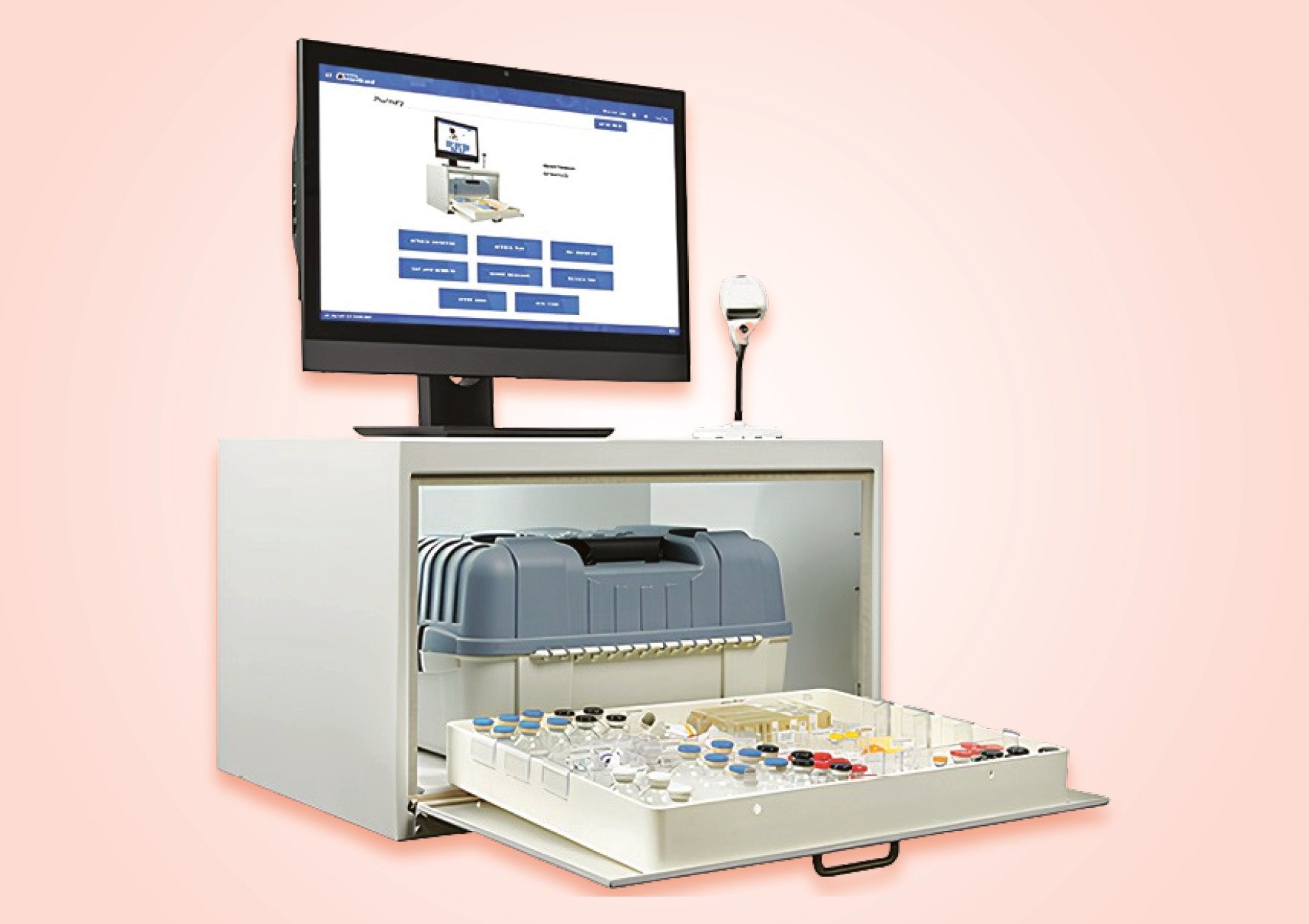- Show Menu
- Contact Us
- FAQs
- Reader Service
- Survey Data
- Survey Winners
- Testimonials
- Upcoming Events
- Webinars
- White Papers
Additional Data on Overall Compliance Scores
Compliance by Facility Size and Activity Level
In an effort to compare compliance scores based on the size of the provider, the number of CSPs compounded per week was measured. The graph below compares the entire sample against hospitals only based on this characteristic. (see Online Figure 1). Though the hospital group’s scores are lower overall, the slope of the linear trend lines is similar between groups. The slightly steeper slope in the hospital group reflects the lower scores from the smaller hospitals, particularly those with less than 99 beds. This data seems to support a previous <797>-compliance study’s finding that smaller hospitals may be more reluctant to change their practices than larger hospitals. 1 A comparison between categories of CSPs compounded per week reveals the largest overall compliance group difference when comparing hospitals compounding less than 500 CSPs/week (n=71.9) to those compounding 500 or more (n=76.3) (see Online Figure 2). Applied standard error lines for each group do not overlap so the differences between the groups are more likely to be real.
Online Figure 1

Online Figure 2
The data in the graph below depicts the overall compliance score based on hospital bed size (see Online Figure 3). The linear trend line shows a steep curve up as hospital bed size increases. In this study population, hospitals with larger bed capacities tend to have higher overall compliance scores. It is important to remember though that this study’s population is under-represented by smaller hospitals. Nonetheless, the data seems to confirm previous reports that smaller hospitals may have more difficulty implementing <797> standards.
Online Figure 3

Results: Description of Overall Population and Population Subsets
Hospital pharmacies (894) represented the overwhelming majority of the total sample population of Survey Respondents (1148) with home infusion/ambulatory infusion suites comprising the next largest group (122).
Online Figure 4

Click here to view a larger version of this Table
Since hospitals were by far the largest provider type represented in the population, we obtained additional data about hospitals relative to their size based on hospital beds. These data are summarized below, however, it is important to know that the study hospital population demonstrates some differences from the American Hospital Association’s Annual Survey of Hospitals2. The table below compares the study population with the 2008 AHA data (see Online Figure 5). The study population appears to be underrepresented by small hospitals (<100 beds) and over represented by large hospitals with more than 200 beds and more than 400 beds.
Online Figure 5
Online Figure 6

Another measure of provider size, which is also thought potentially to influence compliance with USP <797>, is the number of CSPs compounded per week. The graph below illustrates that there are few differences in the distribution of scores when comparing all respondents versus hospital only data.
Online Figure 7
Online Figure 8
There was geographic representation from every state and the District of Columbia. There was a range of participants per state from 1 (District of Columbia) to 75 (Texas) with a mean of 22.5 and a median of 15 respondents per state respectively.
Online Figure 9

Click here to view a larger version of this Table
The majority of hospitals (63%, n=561) compound at a single, centralized location. However, 333 hospitals did have additional sterile compounding locations, with most of those hospital pharmacies (235) reporting 1 or 2 additional locations and just 11% of all hospital pharmacies reporting that they have 3 or more sterile compounding locations at their organization.
Online Figure 10
When more than one sterile compounding location existed at their physical address, respondents were asked to complete the Gap Tool for their busiest sterile compounding location. When asked to classify other sterile compounding locations (if applicable), hospitals noted a total of 613 other locations according to predefined categories provided in the Gap Tool.
Online Figure 11
Of the 19 who indicated “other”, they included comments that were examined and classified individually as follows:
Online Figure 12
The number of pharmacies who reported that they performed high risk compounding was under 20% regardless of population.
Online Figure 13
Compounding Outside of ISO Class 5
Respondents were also asked if any sterile compounding occurred outside of an ISO Class 5 environment. Those that answered affirmatively then were asked questions about the Immediate-Use risk level. The number of entities reporting that they perform sterile compounding outside an ISO Class 5 environment was surprisingly low. We expected home infusion providers to have a higher percentage of compounding occur in the home/ambulatory setting (outside of a ISO Class 5 compounding environment) since these providers often care for those with chronic illnesses who receive very high cost drugs that are often not compounded prior to completion of a pre-infusion patient assessment and secured IV access. We also expected hospitals to report a much higher percentage of compounding occurring outside of ISO Class 5 environments since patients in these settings are more critically ill and therefore more likely to receive emergency care for cardiac or respiratory arrest.
Online Figure 14
Negative Findings
Respondents were asked to indicate which (if any, all or some) of the entities listed had ever had negative findings about their organization related to USP Chapter <797> or to sterile compounding practices in general. While respondents were assured that the data would be blinded and confidential, we still anticipated that many might decline to answer this question. To the contrary, only 21 of 1148 total respondents declined to answer and only 13 of 894 hospitals declined to answer. These data revealed that 86% of all respondents as well as 86% of hospitals report that no outside entity has ever had negative findings about their sterile compounding practice. The State Boards of Pharmacy are the entity most often reported as having had negative findings (see graphs below). Those facilities reporting the source of their negative findings as “other” (n=30 for all respondents and n=27 for hospitals) indicated these were generally hood or cleanroom certification companies or noted that they either had never been inspected or did not know the outcome of their inspection.
Online Figure 15
Sources of Negative Findings

Online Figure 16
As the survey data is blinded, respondents were comfortable reporting the details of negative findings related to their compounding practices, only 9% of hospital respondents declined to answer this question. Of those responding, just 14% of hospitals have had negative findings relating to their sterile compounding practices, usually as a result of state board of pharmacy or accrediting organization inspections.
Engineering Controls in Place
The study also classified the respondents based on the type of primary and secondary engineering controls they had in place. These questions were used partially as gating questions to select other questions later in the survey but they are also useful in looking at the sample population. The participants were asked to report if the sterile compounding location they were answering for had a buffer area, ante area or neither. The results are reported below. Note that two hospital answers were discarded as they indicated one or both secondary engineering controls but also indicated they had neither secondary engineering controls. Therefore, both the entire population and hospital population decreased by two for this item.
Online Figure 17
Respondents’ Secondary Engineering Controls

Click here to view a larger version of this Table
Online Figure 18
While most hospitals' compounding areas include both buffer and ante areas, 22% of hospital pharmacies operate without either of these important controls. The 1016 hospitals and home infusion/alternate site providers have a total of 2362 primary engineering controls in place.
- Timothy CA, Schneider PJ and Pedersen CA. Impact of the United States Pharmacopeia chapter 797: results of a national survey. AJHP. 2006; 63:1336-1343.
- American Hospital Association. Annual survey of hospitals. 2008.

Like what you've read? Please log in or create a free account to enjoy more of what www.pppmag.com has to offer.








